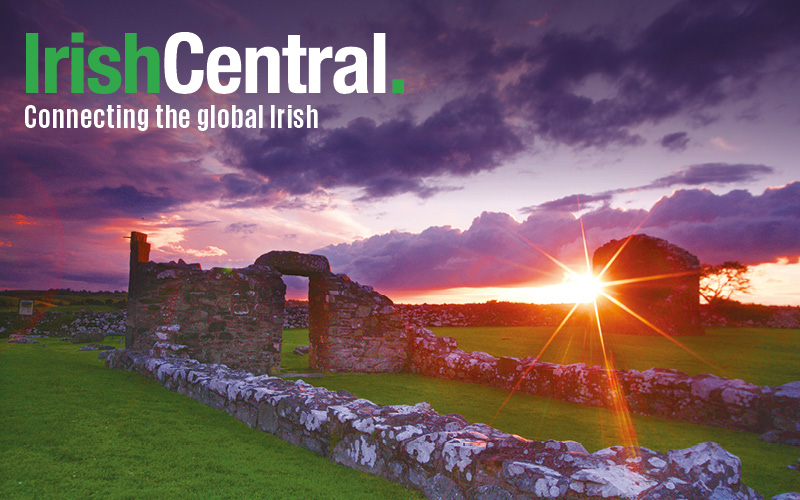The Ireland Reaching Out project is the brainchild of Mike Feerick, a Galway businessman who has his own personal experience of emigration. Feerick, who now lives near Loughrea, was born in New York and lived for many years in America.
“I know what it’s like for people,” he says. “Their relationship with Ireland can be an unrequited one. They place a huge value on this country and their connections to it but often, when they visit, we Irish don’t reach out to them. We don’t appreciate how important our connections are.”
Mike’s project meets this problem head on, and in so doing, may completely revolutionize Ireland’s relationship with its worldwide diaspora.
“Our diaspora has been compared to a pot without a handle because we haven’t known what to do with it,” says Mike. “I want to connect people in a way that will enrich all of our lives.”
He is starting with his own part of Ireland – South-East Galway. With 44,000 people (approximately 1% of the total population of Ireland), this region has experienced long-term emigration and was particularly affected by the Great Famine.
“Take the parish of Clontuskert,” cites Mike. “Before the famine, there were 4,000 people and now there are fewer than 1,000. There are thousands of their descendants all over the world. Taking Galway as a whole, there are millions out there connected to the county. Instead of waiting for them to find us, we are finding them and inviting them back.”
Last year, Mike approached David McWilliams, a well-known economist who has been soliciting new ideas for rebuilding Ireland, with his plan. David instantly saw its potential.
“It’s about re-imagining Ireland,” says David. “We’re putting together a jigsaw and coming to a new understanding. We’re not just a small island off the coast of Europe, we’re the mother ship of a global tribe.”
With David’s help, Mike got the backing of the Irish government, and last November he started the process of inviting members of that global tribe home. He and his team recruited volunteers from all of the parishes in the area. These volunteers then interviewed people in their local communities, asking them for details about people who had emigrated in living memory.
Those people were then contacted and invited to a “Week of Welcomes,” which took place from June 26th to July 3rd. The event was also advertised in brochures, through the Irish pub network and online.
“A huge amount of people were involved,” says Mike. “More than 500 volunteers from all of the parishes researched the history, sent letters and reached out to people.”
Thirty people came to South-East Galway for the very first “Week of Welcomes.” From America, Australia, New Zealand, Argentina and Britain, they converged on Cloghan Castle, a restored Norman watchtower in the townland of Kilchreest.
“The first people I met were Kathleen O’Brien and her daughters Kristine Davis and Julie Fennell from Boston.” Their ancestors hailed from the Ballinakill parish, so they were thrilled to receive their letter of invitation.
“I came to Ireland for the first time with my husband five years ago,” Kathleen said. “We took a bus tour for our 40th anniversary. We saw lots of the country but we didn’t meet many people. I’m expecting it to be very different this time.”
Her daughter Kristine has never visited Ireland before. “I just want to feel closer to Ireland after this,” she says. “I want to meet family that I never knew existed.”
Kathleen’s other daughter Julie is a history buff and has previously visited Ireland in search of her roots. “I found lots of cousins and this time, I hope to find even more,” she says. “I’m also really looking forward to seeing my mother meet her family. This really is the trip of a lifetime for her.”
It isn’t just visitors who are arriving at the castle. There are lots of local people too. Sister de Lourdes Fahy, who has been involved with the project from the beginning, is a history and genealogy enthusiast who runs a museum near Gort. Her task for the week is to help those people who have family connections with the parish of Gort.
“I was the one who invited them to come here and I’ll be showing them around during the week,” she explains. “I’ll be introducing them to their relatives, bringing them to graveyards and to the land their ancestors once lived on.”
It’s this personal touch that Mike Feerick emphasizes above all else. “Genealogy can be a lonely business,” he says. “What’s missing is the contact with people. We asked all of our visitors to tell us what they knew about their family connections before they arrived, and our team of volunteers has been working on finding out more. As a result, we’ll be able to put them in direct contact with living relatives. We’ll be able to bring them out to the parishes and show them the houses and fields they came from. They won’t be alone.”
Ed and Margaret O’Connor, originally from Holyoke, Massachusetts and current residents of Husdon, MA, are already impressed by this approach. They visited Ireland once before and explored Ed’s Irish roots. This time, they are focusing on Margaret’s side of the family – the Egans of Gort.
“I’m related to the O’Connors, Houlihans, Barretts and O’Donoghues in West Kerry and when I went to the place where my great grandfather was baptized, I felt a sense of homecoming,” says Ed. “I’d like Margaret to feel that about this part of Ireland.”
Although she has just arrived at the castle, Margaret has already been introduced to a local man who now owns the land her family once farmed. “It means so much to be welcomed by a community,” she says. “It would be so different and so much more difficult if we were just walking around on our own.”
Ed, Margaret and the rest of the visitors have a packed schedule ahead of them for the rest of the week. There are history lectures telling of what Ireland once was. There are genealogy sessions. There are trips to the various parishes the visitors hail from. There are sightseeing tours and cultural excursions.
“We want to tell them all about this part of Ireland, what it once was and what it is today,” says Mike Feerick. “These people are not just anybody. They are our relatives. We are part of them and they are connected to us. Let’s explore the bonds that unite and define us.”
Although the week has only just begun, it’s clear it’s already a success. Mike already has more than 200 people signed up for next year’s “Week of Welcomes,” and plans are afoot to roll the project out on a nationwide basis, with the support of Fáilte Ireland, the country’s tourism body.
But Mike has plans to develop it even further. It’s not just going to be a week of events. There will be permanent teams in parishes all over the country that will be available to help people who want to learn more about their heritage.
“People will be there to welcome you when you arrive,” says Mike. “It’s all about building lifelong connections.”
He hopes these connections will play a central part in Ireland’s future. “I’d like to see a day when all state boards were obliged to have a member of the diaspora,” he says. “I’d like to see a time when Ireland didn’t just focus on the Irish on our island but on the Irish worldwide. I want to connect people and reunify us all. Parish by parish, townland by townland, we’re starting here.”
To find out more about the Week of Welcomes and Ireland Reaching Out, visit www.irelandxo.com




Comments